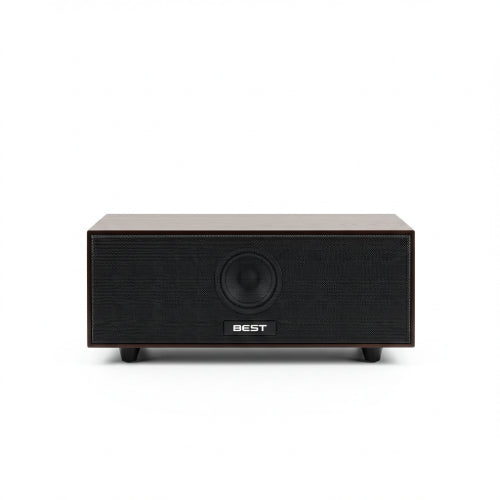Amplify Your Productivity: Choosing the Best Speakers for Your Office Sound System
In today's dynamic workspace, sound plays a vital role. Whether it's setting the mood with background music, ensuring crystal-clear audio for conference calls, or delivering impactful presentations, a well-designed office sound system can significantly enhance productivity, communication, and overall employee well-being. But with a vast array of speaker types and features available, selecting the right ones for your office can feel like navigating a sonic labyrinth.
Fear not! This comprehensive guide will explore the best types of speakers for various office needs, helping you create an audio environment that truly resonates with your team and clients.
Understanding Your Office Audio Needs:
Before diving into specific speaker recommendations, take a moment to define how your office sound system will be used:
- Background Music: For creating a pleasant and productive atmosphere. This might require discreet and evenly distributed sound.
- Conference Calls & Video Conferencing: Clarity and intelligibility are paramount. Dedicated conferencing speakers or high-quality desktop speakers with microphones might be necessary.
- Presentations & Training: Powerful and clear audio to reach everyone in the room is essential. Portable PA systems or larger bookshelf speakers could be suitable.
- Alerts & Announcements: Clear and easily audible sound throughout the office space. Ceiling speakers or intercom systems might be the best solution.
- Multi-Purpose Use: A flexible system that can handle various audio needs. This might involve a combination of different speaker types.
Top Speaker Types for Office Sound Systems:
1. Desktop Speakers:
- Best For: Individual workstations, small meeting rooms, focused audio for conference calls.
- Pros: Compact, easy to set up, often offer good sound quality for their size, some models include integrated microphones for conferencing.
- Cons: Limited coverage for larger spaces, can contribute to desk clutter.
- Considerations: Look for clear audio reproduction, sufficient volume for the listening area, and models with built-in controls for easy adjustments. For conferencing, prioritize speakers with good microphone quality and noise cancellation.
2. Bookshelf Speakers:
- Best For: Small to medium-sized meeting rooms, providing background music with better fidelity than basic desktop speakers, presentations in smaller groups.
- Pros: Offer richer and more detailed sound than desktop speakers, can be placed on shelves or stands for optimal positioning.
- Cons: Require more space than desktop speakers, may need a separate amplifier for optimal performance (passive models).
- Considerations: Choose models with good clarity and balanced sound reproduction. Active bookshelf speakers have built-in amplifiers, simplifying setup.
3. Ceiling Speakers:
- Best For: Background music throughout the office, delivering consistent audio in larger spaces, discreet and space-saving installations, paging and announcements.
- Pros: Even sound distribution, minimal visual clutter, can be integrated into existing ceiling infrastructure.
- Cons: More complex installation, may require professional wiring, sound quality can vary depending on the model and installation.
- Considerations: Plan the speaker placement carefully for optimal coverage. Choose models with appropriate power handling and frequency response for your needs. Consider models with tap settings for adjusting volume levels in different zones.
4. Soundbars:
- Best For: Enhancing audio for presentations displayed on a screen, smaller meeting rooms where simplicity is key, improving the built-in audio of office TVs.
- Pros: Sleek and minimal design, easy to set up, often offer decent sound quality and volume, some models include Bluetooth connectivity.
- Cons: May not provide the same level of audio fidelity as dedicated bookshelf speakers, can sometimes lack deep bass.
- Considerations: Look for soundbars with clear dialogue reproduction and sufficient power for the room size. Models with multiple input options (HDMI, optical, Bluetooth) offer greater flexibility.
5. Portable PA Systems:
- Best For: Presentations in various locations, training sessions, events within the office, situations where flexibility and easy transport are crucial.
- Pros: All-in-one solution with built-in amplifier, speakers, and often microphones, battery-powered options for true portability, can handle larger audiences.
- Cons: Sound quality may not match dedicated installed systems, can be bulky to transport depending on the size.
- Considerations: Choose a system with sufficient power and clarity for your typical audience size. Consider features like wireless microphone compatibility and Bluetooth connectivity.
6. Wireless Multi-Room Speakers:
- Best For: Creating a seamless background music experience throughout different office zones, allowing for individual volume control in various areas.
- Pros: Easy to set up and control via a mobile app, flexible placement options, can be expanded over time.
- Cons: Relies on a stable Wi-Fi network, sound quality can vary between brands and models.
- Considerations: Choose a reputable brand with a user-friendly app and good sound quality. Ensure the system can integrate with any existing audio sources you might have.
Key Considerations When Choosing Office Speakers:
- Room Acoustics: Consider the size and shape of your office spaces, as well as the materials used (carpet, hard walls, etc.), as these can affect sound quality. Acoustic treatment might be necessary in some cases.
- Budget: Determine your budget for the entire sound system, including speakers, amplifiers (if needed), and installation costs.
- Ease of Use: Choose a system that is easy for everyone in the office to operate. Simple controls and intuitive interfaces are important.
- Scalability: Consider whether your audio needs might evolve in the future and choose a system that can be easily expanded.
- Aesthetics: Select speakers that complement the design of your office environment.
Creating the Perfect Office Soundscape:
Choosing the best speakers for your office sound system is an investment in your team's productivity and overall work environment. By carefully considering your specific needs, the different types of speakers available, and the key factors outlined in this guide, you can create an audio landscape that enhances focus, facilitates clear communication, and ultimately amplifies your office's success. So, listen closely, do your research, and let the right sound system transform your workspace.







